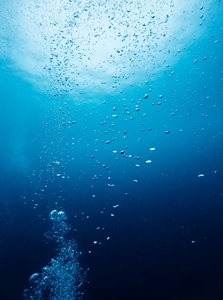
Did you know that here in Australia, we're the biggest users of water per capita in the world? According to the federal government's Your Home website, we each consume on average 100,000 litres of fresh water every year. All of this, despite the fact that our average annual rainfall is below the global average, currently sitting at 469mm annually.
Climate change has been impacting fresh water supplies, and on top of this, the Australian Bureau of Statistics said in 2013 that it expects the national population to have doubled by 2075. So clearly, we need to do some work on saving water or creating water – and that applies to your custom designed shed as well. If you're using a shed in a rural area, or even domestically in a metropolitan area, there will be several actions you can take to start saving water and doing your bit.
At Shed Boss, we can organise all the permits and connections to get your custom designed shed fixed up with water pipes – but it's up to you to make sure water use is responsible once the construction is complete. So how do you go about this?
Tank you very much
When you design your own shed or barn in the fantastic Shed Boss App, you'll notice a wide range of extras that you can put on your construction. This includes insulation, windows, roller doors, remotes for those roller doors, and much more. But down the bottom of the list of accessories you will find something incredibly relevant to this blog post – rainwater tanks.
Installing rainwater tanks can be an excellent way of saving water with your shed. It minimises the bottom line of your water bills, as well as providing you with a backup supply should your main water flows ever be damaged. However, make sure you also use the right level of chemical treatment on the water you collect with your Shed Boss tanks!
Depending on whether you use the water for showering, drinking or even laundry, there will be a different health standard to meet. Check up on these before you use anything collected in the tanks. They will require ongoing maintenance, but overall can save you a lot of money and water in the long term. You may also be able to get this hooked up to your new shed!
Don't be late, insulate
One excellent way of saving on water is by insulating your hot water pipes. In the Shed Boss App, you will see that both water and insulation are separate options to add to your custom designed shed or workshop. This will keep the heat in, and save you precious energy and water in the long term. Check with Shed Boss to see if it is something to work with your construction.
Be keen and clean
If you want to run a dairy shed or barn, there are some easy ways to cut down your water use, especially when it comes to waste management and cleaning up after your livestock. Make sure you sweep the floors down with a dry broom or other implement first, to get rid of a large amount of filth before you use your hose.
What's more, the use of a high pressure hose can increase efficiency – and the power of the clean!
No matter how you decide to use a custom designed or industrial shed, water is likely to form a part of your day-today use of it. Follow these tips and we can all benefit from the water savings. You might see some better results for your financial bottom line too!
